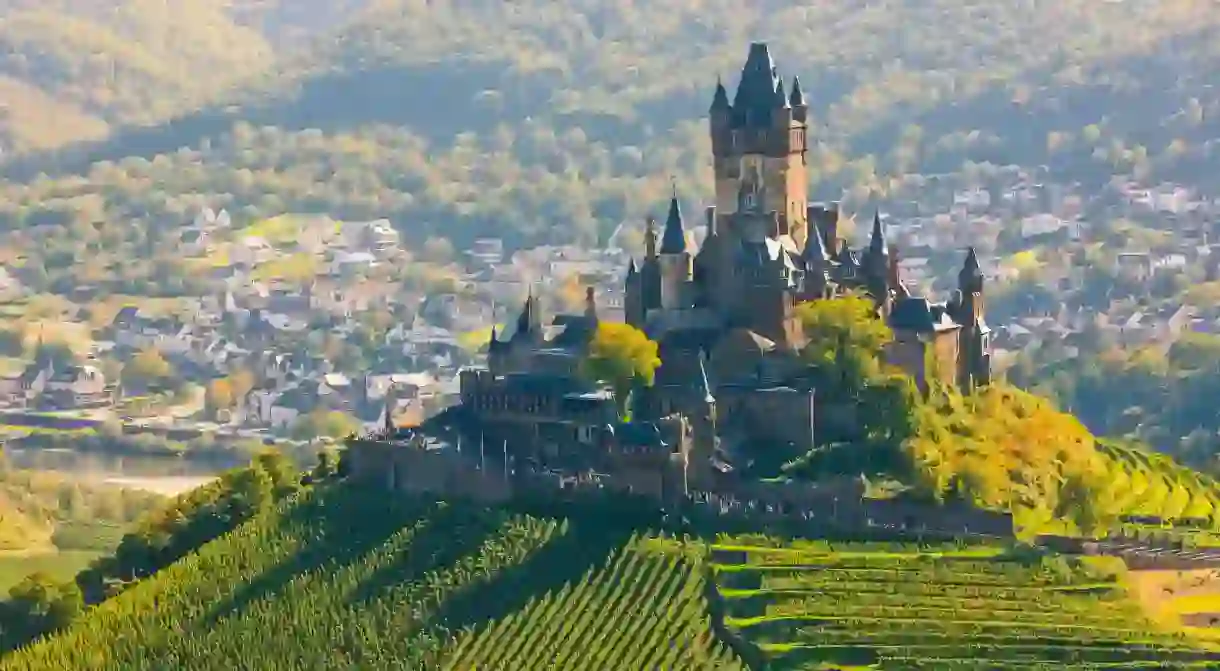The 13 Oldest Castles in the World That You Can Still Visit

Like something straight out of a fairytale, these magnificent castles have stood the test of time – from wars and famines, to floods and earthquakes – and are still standing today. Medieval fortresses and Renaissance chateaux, these awe-inspiring buildings are steeped in history and are an important part of our global human heritage.
Chambord Castle, Loire Valley, France
Building

The largest and most prestigious of the many castles or chateaux of the Loire Valley in France, the Chateau de Chambord was built for King Francis I in the 16th century. The Chateau de Chambord is famous for its distinctive French Renaissance architecture; on the one hand it borrows features from classic Medieval castles (such as a moat and walls, albeit ornamental in this case) and blends them with contemporary Renaissance structures.
Boldt Castle, New York, USA
Bridge, Building

Dunrobin Castle, Scotland, UK
Historical Landmark

Castillo de San Marcos, Florida, USA
Building

Alcazar of Segovia, Spain
Building

The first fortress built on this area was constructed by the Ancient Romans, little of which aside from the foundations remain. Later, the Moors built a fortress here for the Almoravid dynasty which ruled this part of Spain until the 11th century. This is when the original mentions of an ‘alcazar’ – a Moorish word for castle – first appear. While the Muslim fort, believed to have been made of wood, was mostly destroyed and replaced with the current stone construction, the castle kept the name Alcazar of Segovia.
Krak des Chevaliers, Syria
Building

Back in the early 20th century, the great Lawrence of Arabia remarked of the Krak des Chevaliers that it was ‘perhaps the best preserved and most wholly admirable castle in the world’. The castle was founded by the crusaders who set off to Eastern Mediterranean and Middle-Eastern Muslim countries to rage holy war. In the 11th century, the crusaders conquered a Kurdish fort that stood in this spot and by the 12th-century constructions began on the fortress which stands there today.
Reichsburg Cochem, Germany
Building

While there are no records of when the castle was first built in Cochem, it’s widely believed to have been constructed around the year 1000. In the 12th century, the Cochem castle became an imperial castle at the time when the Staufer dynasty reigned in Germany. However, in the 17th century, the castle was attacked by the French who left it in ruins and largely abandoned until the 19th century when it was acquired by Berlin businessman Louis Fréderic Jacques Ravené, who restored it in Gothic-Revivalist style.
De Haar Castle, Netherlands
Building

If the castle here first came into ownership of the De Haar family in the 14th century, little remains of this original construction except for the name. Following a series of pillages, periods of abandonment and war, the De Haar castle was finally restored in 1892 with funding from the wealthy Rothschild family. Prominent architect Pierre Cuypers was hired for a period of 20 years to design the Neo-Gothic castle with some 200 rooms and 30 bathrooms, fitted with what were at the time very modern furnishings such as electric lights and steam-powered central heating.
The Castle of Good Hope, South Africa
Building

Castillo San Felipe del Morro, Puerto Rico
Architectural Landmark, Historical Landmark

This Puerto Rican fortress was constructed upon orders of the Spanish King Charles V in the 16th century and displays the common features of Spanish military fortress of the time. The castle came under attack many times, not least by the famous Sir Francis Drake of England, who failed his endeavour. The castle finally came under American rule in the 19th century during the Spanish-American War, which ended with Spain ceding ownership of the islands of Puerto Rico, Cuba, Guam, and the Philippines to the United States.
Portchester Castle, England, UK
Building

What remains of this grand Medieval castle can be found to the north of Portsmouth harbour on the southern coast of England. Believed to have been constructed during the 11th century, Portchester Castle displays typically Roman features (such as D-shaped towers) which are believed to have been incorporated into the construction from pre-existing Roman foundations. Used as a prison throughout much of the 17th century, today the castle is open to the public for tours and exhibitions.
Conwy Castle, Wales, UK
Historical Landmark

Described by Unesco as “one of the finest examples of late 13th century and early 14th-century military architecture in Europe”, Conwy Castle was constructed by Edward I during his conquest of Wales in the 13th century. Composed of an inner and outer wall, the castle boasts eight large towers and two barbicans, as well as its own private access to the sea allowing it to be resupplied with water.
Kilkenny Castle, Ireland
Historical Landmark

Holidaying in the States? See the Culture Trip guide to the most beautiful castles in the USA.













